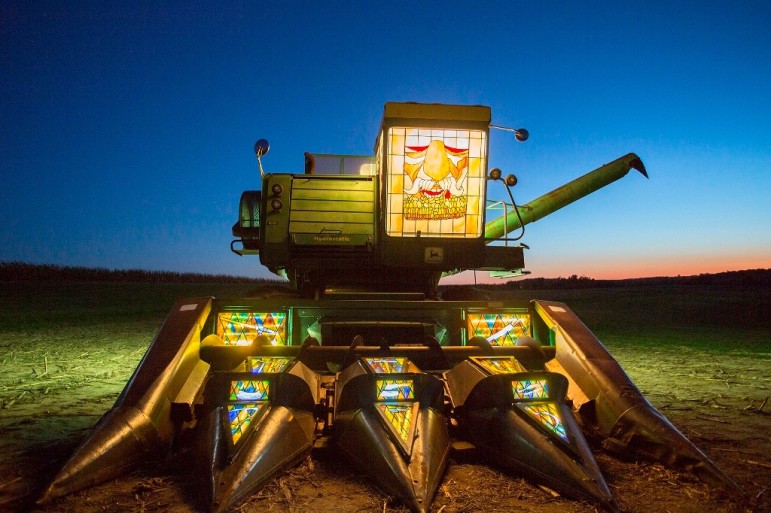
August 9, 2015; Minneapolis Star Tribune
Earlier this week, NPQ reported on a novel approach to civic engagement in Minneapolis: artist residencies in city planning departments, aimed at sparking fresh ideas for solving urban issues. Today, we note that the North Star State is also an innovator when it comes to integrating the arts into its rural communities. As reporter Kristin Tillotson says, “Across Minnesota, small towns and farms are busy putting the culture in agriculture.”
The state has one huge advantage in this area: its Legacy Amendment, which funnels sales tax revenues into the arts. But Minnesota’s rural communities have also received significant grants from other sources, including $75,000 from the National Endowment for the Arts (NEA) to the town of Fergus Falls for local artists to develop preservation and economy-boosting projects; and $313,000 from ArtPlace America to Lanesboro to integrate an “arts campus” throughout the tiny town, already known for its theater and promoted as “the B&B capital of Minnesota.”
Lanesboro has only 750 residents, so its cultural leaders are interested in infusing the arts into everyday activities—like engaging residents in “building ‘surprise’ sculptures in unexpected places or making prints with rhubarb stalks at a farmers market.” As John Davis, director of the Lanesboro Arts Center, explains, “In a small town, your audience is everyone.”
Fergus Falls sees the arts as essential to population growth and retention—and thus economic stability—especially among “an under-35 creative class who are choosing to stay and buy houses here,” according to Michele Anderson of the local office of Springboard for the Arts.
Sign up for our free newsletters
Subscribe to NPQ's newsletters to have our top stories delivered directly to your inbox.
By signing up, you agree to our privacy policy and terms of use, and to receive messages from NPQ and our partners.
While some of the initiatives currently underway may benefit cultural tourism, most of the efforts seem to be based on an understanding of the intrinsic value of the arts in the life of any community and the sense of belonging that anchors people to a place. Jamie Robertson, director of the New York Mills Regional Cultural Center, which recently converted an old creamery into a folk-arts school, puts it this way: “We want people to see art not as something you hang on your wall, but as something that makes you human, helps you understand issues and solve problems.”
Because the arts are effectively helping to preserve rural life in Minnesota, cultural initiatives around the state have captured the attention of the U.S. Department of Agriculture. This may sound like an unusual ally, but like other federal agencies, the USDA has been pulled into the conversation about rural arts through the NEA’s Our Town grant program. Here’s how this three-year-old program is described on the NEA website:
Creative placemaking is when artists, arts organizations, and community development practitioners deliberately integrate arts and culture into community revitalization work—placing arts at the table with land-use, transportation, economic development, education, housing, infrastructure, and public safety strategies. This funding supports local efforts to enhance quality of life and opportunity for existing residents, increase creative activity, and create a distinct sense of place.
What’s happening in rural Minnesota is the envy of other rural-arts developers, says Michael Strand of the North Dakota State University at Fargo. To us, what’s happening in rural Minnesota and in urban Minneapolis—as artists are quite intentionally invited into civic life in new ways—bears watching by arts and civic leaders elsewhere. –Eileen Cunniffe











